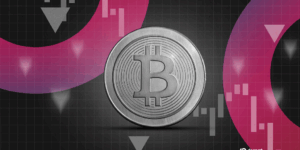Breaking Ethereum’s 138 Islands: The Alignment Revolution Explained

ethereum‘s Path to Unity: Addressing Fragmentation in a Decentralized Ecosystem
The Current State of ethereum: A Double-Edged Sword
The ethereum landscape is at a pivotal moment, characterized by a vibrant developer community and a plethora of innovative projects spanning various sectors, including decentralized finance (DeFi) and social networking. However, this diversity brings forth a significant challenge: how to preserve decentralization without allowing the ecosystem to splinter into numerous incompatible factions. Vitalik Buterin’s recent proposal for “ethereum Alignment” may provide a viable solution.
- The Current State of ethereum: A Double-Edged Sword
- Understanding the Dilemma: Decentralization vs. Chaos
- Proposed Solutions: Defining ‘Alignment’ Metrics
- 1. Commitment to Open Source and Transparency
- 2. Emphasis on Open Standards
- 3. Testing for Decentralization Resilience
- 4. Encouraging Positive Contributions
- Innovative Governance: Shifting from Personal Connections to Metric-Based Evaluation
- Navigating Challenges and Embracing Opportunities
- Looking Ahead: A Unified ethereum Ecosystem
Understanding the Dilemma: Decentralization vs. Chaos
ethereum‘s strength is rooted in its variety—different Layer 2 teams, developers, and researchers are pursuing unique paths. Yet, this very diversity can lead to several issues:
- Technological Disparity: The absence of standardized protocols among Rollups results in a disjointed experience for cross-chain transfers.
- Conflicting Values: Some projects prioritize short-term profits over the principles of open-source and decentralization.
- Economic Isolation: Certain ecosystems opt for their own tokens instead of utilizing ETH, which diminishes the overall network effect.
Vitalik emphasizes that the primary challenge lies in fostering integration rather than imposing control, advocating for a structured framework for collaboration instead of enforced uniformity.
Proposed Solutions: Defining ‘Alignment’ Metrics
To navigate the complexities of coordination, Vitalik suggests breaking down the coordination process into specific, measurable indicators, including:
1. Commitment to Open Source and Transparency
The foundational code should be open source, adhering to established standards, while allowing flexibility at the application layer. For instance, Lido has faced scrutiny for its centralized approach with a whitelist for node operators, whereas Rocket Pool encourages broader participation.
2. Emphasis on Open Standards
Projects must ensure compatibility with essential protocols like ERC-20 and ERC-4337, and any new features should be introduced through community proposals. Currently, while Optimism and Arbitrum have adopted a unified address format, the development of cross-L2 proofs remains incomplete.
3. Testing for Decentralization Resilience
- Withdrawal Test: Can the application sustain operations if the founding team is no longer involved? For example, decentralized applications reliant on centralized services like AWS may face challenges.
- Internal Attack Test: Assess the system’s ability to withstand censorship, particularly concerning the centralization of Layer 2 sequencers.
4. Encouraging Positive Contributions
Internally, projects should utilize ethereum as their economic layer token or allocate a portion of their revenues to public goods, such as Gitcoin. Externally, they should focus on promoting financial inclusivity and censorship-resistant social networking.
Innovative Governance: Shifting from Personal Connections to Metric-Based Evaluation
Vitalik advocates for the creation of independent assessment bodies, akin to L2beat, to monitor project alignment through data rather than relying solely on endorsements from foundations. Examples include:
- Rollup Stage Rating: Categorizing projects based on their decentralization levels, from “Training Wheels” to “Fully Decentralized.”
- Economic Contribution Dashboard: Publicly revealing the percentage of project contributions to ethereum staking and public goods funding.
- User Empowerment Tools: Light clients, like Helios, enable users to verify chain data independently, reducing reliance on centralized RPCs.
“Coordination should focus on the alignment of code and actions with transparent standards, rather than personal relationships,” Vitalik asserts.
Navigating Challenges and Embracing Opportunities
While some projects may withdraw due to compliance or technical challenges—such as Tether’s struggle to secure an EU MiCA license—the long-term benefits of unified standards promise to lower development barriers and attract traditional investments, exemplified by Blackrock’s involvement in staking via EIP-7251.
The ethereum Foundation is actively transitioning governance to community-led organizations, positioning itself primarily as a funding entity. This “polycentric” governance model may represent an optimal approach to balancing innovation with collaboration.
Looking Ahead: A Unified ethereum Ecosystem
If successful, ethereum could evolve from a collection of isolated entities into a cohesive super-ecosystem that thrives on transparent collaboration. As Vitalik notes, “When alignment discussions are framed in a common language, we can progress based on merit rather than favoritism.”
This movement towards alignment is irreversible; the ethereum community must collectively adapt or risk losing its leadership in the Web3 space due to fragmentation.







